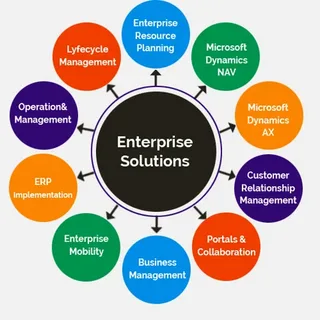Enterprise-level implementation refers to the process of deploying large-scale solutions, systems, or projects across an entire organization. These implementations are complex, involving multiple departments, stakeholders, and often require customization to fit unique business needs. Successful enterprise-level implementation demands thorough planning, coordination, and execution to avoid disruption and ensure alignment with strategic goals. This process is critical because it impacts core operations and can determine the success or failure of major initiatives.
The Importance of Clear Objectives in Enterprise Implementation
Before any enterprise-level implementation begins, it’s essential to define clear objectives. Understanding what the organization hopes to achieve — whether it’s improving operational efficiency, enhancing customer experience, or driving innovation — guides every stage of the project. Well-defined goals provide a benchmark for measuring success and help keep teams aligned throughout the complex rollout process. Clear objectives also assist in prioritizing resources and managing stakeholder expectations effectively.
Assessing Organizational Readiness
One of the key factors influencing enterprise-level implementation success is the readiness of the organization itself. This involves evaluating existing technology infrastructure, employee skill levels, and overall organizational culture. A readiness assessment highlights potential challenges, such as resistance to change or gaps in technical knowledge, allowing leadership to address these proactively. Preparing the organization with training, communication, and support structures helps smooth the transition and reduces the risk of failure.
Selecting the Right Technology and Partners
Choosing the appropriate technology stack and implementation partners can make or break an enterprise project. The selected solutions must integrate well with existing systems, scale with growth, and comply with industry standards. Additionally, experienced partners bring valuable insights and proven methodologies to navigate complex environments. Careful vendor evaluation, including demonstrations, references, and pilot projects, is critical to ensuring the chosen technology meets business requirements and can be effectively deployed at scale.
Building a Robust Project Management Framework
Enterprise-level implementation requires a disciplined project management approach to handle its complexity. Establishing clear governance structures, roles, and responsibilities ensures accountability and smooth communication across teams. Utilizing methodologies like Agile or Waterfall — depending on the project’s nature — helps manage timelines, deliverables, and risk mitigation. Regular status updates, issue tracking, and stakeholder engagement keep the project on course and facilitate quick resolution of obstacles.
Change Management as a Critical Success Factor
Change management is often overlooked but is essential in enterprise implementations. Introducing new systems or processes impacts people as much as technology. A structured approach to change management involves communicating the reasons for change, addressing concerns, and providing training and resources. When employees understand the benefits and are supported through the transition, adoption rates improve significantly. Effective change management reduces resistance, accelerates user acceptance, and ultimately leads to better business outcomes.
Data Migration and Integration Challenges
Enterprise-level projects frequently involve migrating large volumes of data and integrating disparate systems. This phase is technically demanding and carries significant risk because data integrity and availability are vital for ongoing operations. Detailed data mapping, cleansing, and validation are necessary to avoid errors. Integration must ensure seamless communication between new and legacy systems, often requiring custom interfaces or middleware. Thorough testing and contingency plans are crucial to minimize downtime and prevent data loss.
Testing and Quality Assurance
Testing is a non-negotiable step in any enterprise implementation to ensure the solution performs as intended. This includes unit testing, system testing, user acceptance testing, and performance testing. Comprehensive quality assurance uncovers defects before going live and validates that the system meets user needs. Involving end-users in testing increases the likelihood of identifying real-world issues and builds confidence in the new solution. Proper testing reduces costly post-launch fixes and helps maintain business continuity.
Training and Support Strategies for Enterprise Rollouts
Even the best technology fails if users don’t know how to leverage it effectively. Robust training programs tailored to different user roles are critical to empower employees. Training can be delivered through workshops, online modules, or hands-on sessions and should be accompanied by easy-to-access documentation. Additionally, providing ongoing support through help desks or dedicated teams ensures users can resolve issues quickly and maintain productivity. Continuous learning fosters long-term success and adaptation to evolving business needs.
Measuring Success and Continuous Improvement
Once the enterprise-level implementation is complete, it’s vital to measure performance against the initial objectives. Key performance indicators (KPIs) related to system uptime, user adoption, process efficiency, and customer satisfaction provide valuable insights. Regular reviews enable leadership to identify areas for improvement and optimize the solution over time. Enterprise projects are rarely “set and forget”; continuous improvement cycles help organizations adapt to changing market conditions and technology advances.
Mitigating Risks in Enterprise Implementation
Enterprise implementations inherently carry risks related to scope creep, budget overruns, technical issues, and resistance from staff. Proactive risk management involves identifying potential issues early, assessing their impact, and developing mitigation strategies. This may include contingency budgets, phased rollouts, or backup systems. Transparent communication and strong leadership support are essential to navigate risks effectively. When risks are managed well, the likelihood of delivering a successful implementation on time and within budget increases dramatically.
The Role of Leadership in Enterprise Implementation
Strong leadership is a cornerstone of any successful enterprise-level implementation. Leaders must champion the project, communicate its importance, and allocate the necessary resources. They also play a key role in setting the tone for change and driving cultural alignment. Digital Marketing Agency Dubai of Effective leaders engage with stakeholders at all levels, build trust, and address concerns promptly. Their involvement ensures that the implementation stays aligned with broader business goals and receives ongoing organizational support.
Future-Proofing Your Enterprise Implementation
In today’s rapidly evolving technological landscape, future-proofing your enterprise implementation is vital. Selecting flexible, scalable solutions that support integration with emerging technologies helps ensure longevity. Incorporating cloud-based systems, modular architectures, and APIs allows your infrastructure to adapt as business needs change. Additionally, fostering a culture of innovation and continuous learning prepares your organization to embrace new opportunities and challenges beyond the initial implementation.
Conclusion: Achieving Success with Enterprise-Level Implementation
Enterprise-level implementation is a complex but rewarding endeavor that can transform organizations when executed thoughtfully. By focusing on clear objectives, organizational readiness, strong project management, and effective change management, businesses can reduce risk and enhance adoption. Choosing the right technology and partners, thorough testing, and ongoing support further increase the chances of success. Ultimately, leadership engagement and future-proofing strategies ensure that enterprise implementations deliver lasting value and drive sustained business growth.


